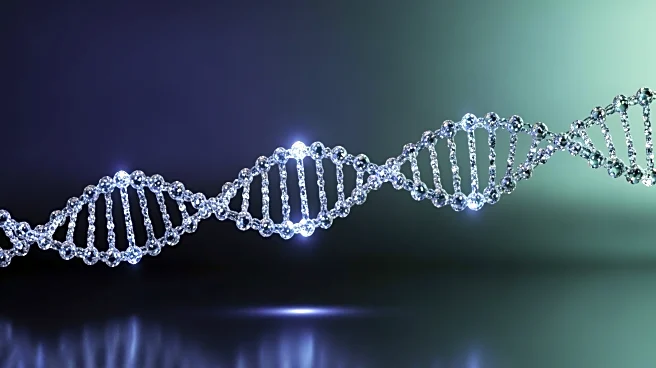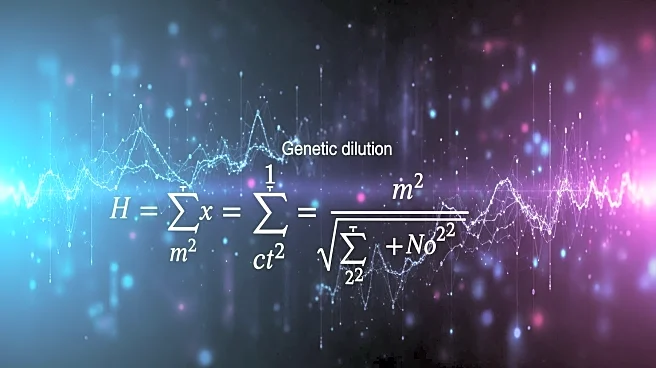What's Happening?
Recent research published in Scientific Reports proposes that Neanderthals may not have gone extinct in the traditional sense. Instead, they might have been absorbed into the modern human gene pool through
interbreeding. The study, conducted by Andrea Amadei, Giulia Lin, and Simone Fattorini, uses mathematical modeling to suggest that small waves of modern human immigration led to recurrent interbreeding with Neanderthals. This gene mixing could have resulted in a genetic substitution over 10,000 to 30,000 years. The research aligns with archaeological data and supports the theory of genetic assimilation rather than sudden extinction.
Why It's Important?
This study challenges the conventional view of Neanderthal extinction and suggests a gradual absorption into the modern human population. The findings have significant implications for understanding human evolution and the genetic diversity of contemporary populations. By highlighting the role of genetic admixture, the research provides insights into the complex interactions between ancient human species. This could reshape the narrative of human history and influence future studies on human ancestry and genetic heritage.
What's Next?
Further research is needed to explore the extent of genetic mixing between Neanderthals and modern humans. Scientists may focus on identifying specific genetic markers that indicate Neanderthal ancestry in modern populations. Additionally, the study's implications for other ancient hominins, such as Denisovans, could be investigated to understand their interactions with early humans. The findings may also prompt a reevaluation of archaeological and genetic data to refine the timeline of human evolution.
Beyond the Headlines
The study raises ethical and cultural questions about the interpretation of human ancestry and identity. It challenges the notion of distinct species boundaries and highlights the fluidity of genetic heritage. This could influence discussions on race, ethnicity, and the concept of 'pure' human lineages. The research also underscores the importance of interdisciplinary approaches, combining genetics, archaeology, and anthropology, to unravel the complexities of human history.











